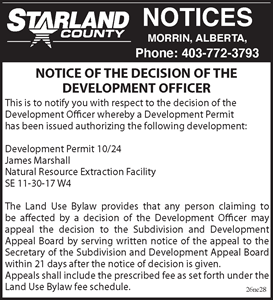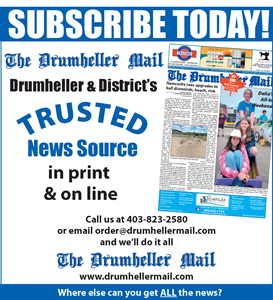 Those who visited the Royal Tyrrell Museum of Palaeontology last summer will notice that a lot has changed in a year. The museum has been revamping its displays since the fall, and has many new sights to offer tourists this year. The first thing returning visitors may notice is the globe which originally stood at the entrance to the museum’s gallery has been moved, and replaced with the new “Cretaceous Alberta” exhibit. Cretaceous Alberta is an accurate re-creation of Alberta during the Cretaceous period, and prominently features three immaculately crafted Albertosaurus statues from famed artist Brian Cooley, which arrived in October 2006.
Those who visited the Royal Tyrrell Museum of Palaeontology last summer will notice that a lot has changed in a year. The museum has been revamping its displays since the fall, and has many new sights to offer tourists this year. The first thing returning visitors may notice is the globe which originally stood at the entrance to the museum’s gallery has been moved, and replaced with the new “Cretaceous Alberta” exhibit. Cretaceous Alberta is an accurate re-creation of Alberta during the Cretaceous period, and prominently features three immaculately crafted Albertosaurus statues from famed artist Brian Cooley, which arrived in October 2006.
“We worked with scientists to ensure all the plant life and other elements are true (to the period), and a very realistic depiction of what Alberta would look like.” said Kathryn Valentine, head of exhibits for the museum. The museum is also featuring a travelling exhibit entitled “Ice Age Mammals”. It is on loan from the Canadian Museum of Nature in Ottawa. The exhibit features fossils from the Ice Age, including a mastodon skeleton, as well as interactive components such as fossils that visitors can actually touch. It also incorporates information about global warming, making the exhibit particularly relevant to modern day issues. “We don’t often feature travelling exhibits,” Valentine said. “We thought it was a great opportunity to talk about climate change, which is of course topical, and also to feature something that is a little bit different.” Ice Age Mammals is also the museum’s only bilingual exhibit. Another new feature of the museum is the recently opened “Lords of the Land” exhibit, which shows pieces from the museum’s collection of meat-eating dinosaurs, also called Theropods, in a special setting reminiscent of an art gallery.
“It’s a dramatic departure for us,” Valentine said, adding the exhibit creates the setting through the uses of hardwood flooring, gilded framework, black velvet and dramatic lighting. “What that particular section has in terms of specimens is a selection of the very best, most scientifically relevant and most beautiful specimens in our collection,” Valentine said. Also be sure to catch “The Ceratopsians” an exhibit within the museum’s Dinosaur Hall that features horned dinosaurs. Twenty per cent of the hall will be devoted to telling the story of the horned dinosaurs, speaking on the diversity of the specimens involved. The exhibit comes due to the museum being scheduled to host a symposium in September on Ceratopsians. The exhibit also incorporates the globe that stood at the entrance to the museum’s gallery, and it is being used as an interactive component where visitors can see the locations of where different specimens have been found throughout the world. In all, the museum features 21,000 square feet of new exhibits for visitors to discover this summer.
Be sure to catch the museum’s celebration of International Museum Day on Friday, May 18.
Starting at 10:30 a.m., the museum will be offering a number of fun, educational activities, giving visitors the chance to explore the mysteries of the Badlands, learn about the cinematic portrayal of dinosaurs over the years. Nature enthusiast and broadcaster John Acorn will also be at the museum that afternoon to speek about his recent publication, Deep Alberta. Summer operating hours for the museum are 9:00 a.m. to 9:00 p.m. daily beginning May 19 and 10:00 a.m. to 5:00 p.m. Tuesday through Sunday until May 18.





























